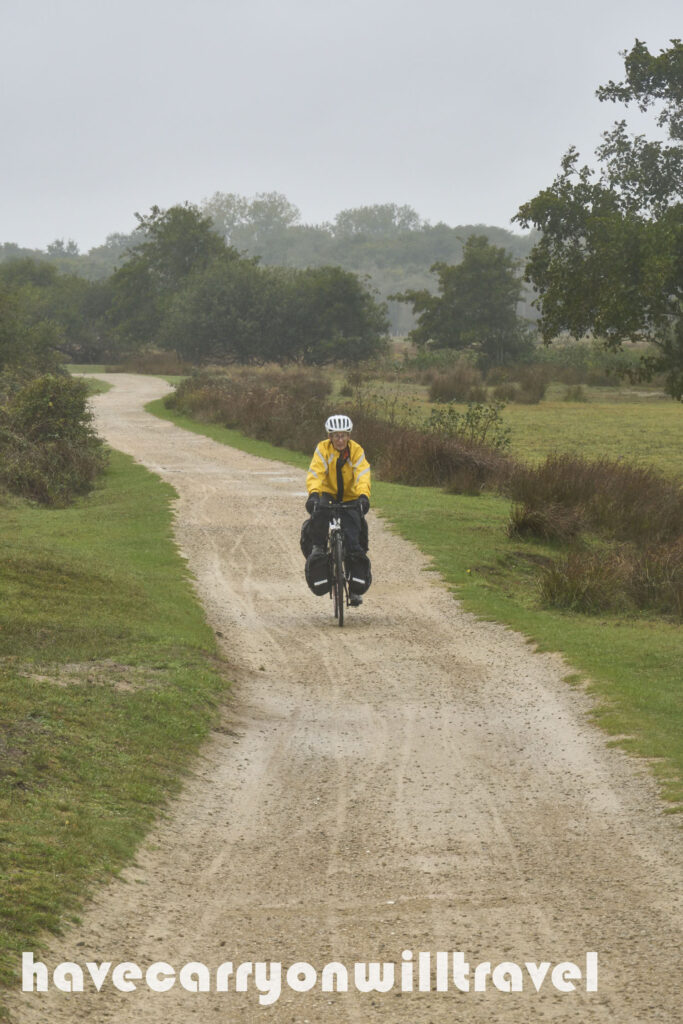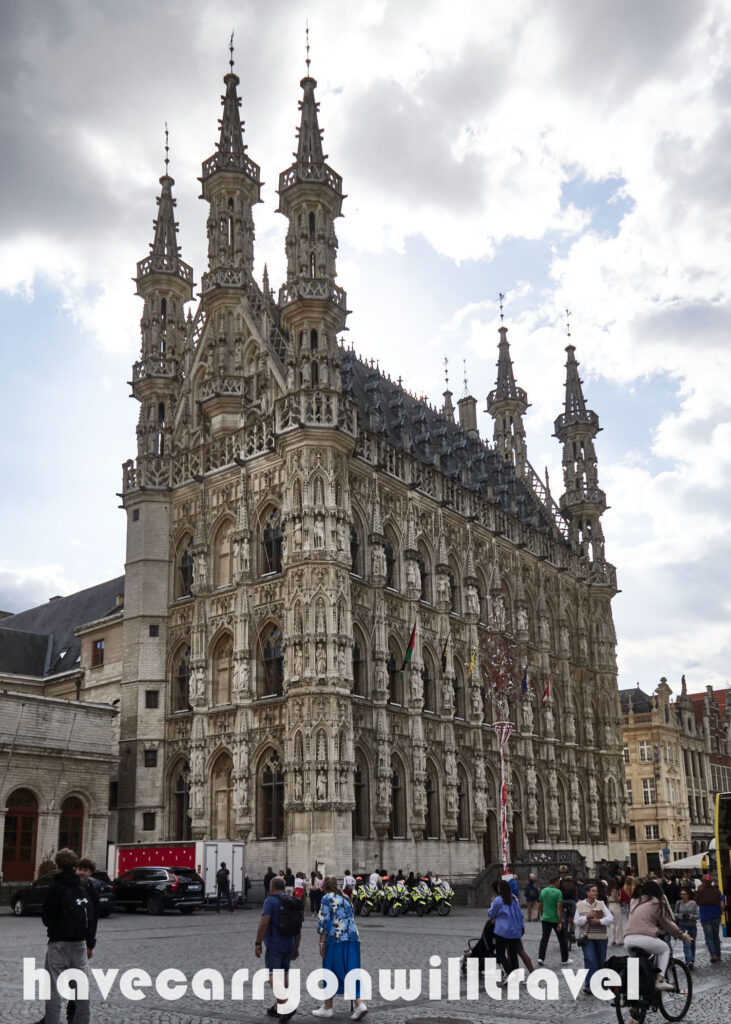I have been thinking a lot about what an English fellow we met at a ferry said to us. He said we had too much stuff. He was camping and still only had four panniers, albeit large ones. He thought we had too many clothes. His riding and street clothes were the same clothes. Here is what I packed for clothes:
Riding
2 pair cycling shorts
2 cycling jerseys
Light jacket
Heavy rain jacket
Heavy rain pants
Pair of riding tights
Cycling gloves
Helmet
Armings (used instead of a long sleeved jersey)
Small hat for under helmet
2 pair cycling socks
Pair of cycling shoes
Pair of warm over gloves
Pair of cycling over shorts with belt
Street Clothes
2 pair of pants-1 technical, 1 linen
3 icebreaker wool shirts-varying sleeve lengths
3 pair of undies
1 pair of socks
Down sweater
Buff
Small sun/rain hat
Scarf
In my view, taking the right amount of clothes is all about risk. How much risk, of being wet, of being cold, of being dirty, are you willing to take. My risk tolerance for wet and cold is almost zero and my risk tolerance for dirty varies depending on the item of clothing. Socks and street pants are high tolerance for dirty, cycling shorts is closer to zero.
With those tolerances in mind, I could have reduced my riding clothes by one jersey, the small hat and one pair of socks. I wore everything else regularly. For the street clothes, I could have reduced by the pair of linen pants as I only wore them once. I also could have left one pair of undies at home. I wore all three shirts regularly, along with the down sweater. So, this would be a small reduction of overall volume and weight in my pannier.
We carried a first aid kit and specific bike parts and tools. Did we really need to carry these? Maybe not, but again what is the risk tolerance? The English fellow’s tolerance is much higher than ours as he did not seem have as many “what if” supplies.
A couple of items we brought that we were waffling on turned into great things to have. A lightweight grocery bag which we used for the few groceries we bought every day and it was also used to carry our water bottles up and down to the rooms each day. A small pair of scissors ended up in the bag and we used them a lot, mainly to open lunch meat and cracker packages. We also brought a plastic knife and spoon and they were also used, mainly for peanut butter.
For my weight and physical ability, I think that I was carrying a reasonable load for my level of risk tolerance.

Living in Canada, I have gotten used to certain free perks. In Europe, there are not many of these free perks. Toilets cost 1 Euro, unless you are eating at a restaurant and then use of the toilet is free. Tap water is not free in a restaurant. Ketchup or mayonnaise is 1 Euro. Napkins are free! Is it to cut down waste or excessive use? Perhaps.
Walking towards and then passing by people is always a game of chicken in Europe. I got good at waiting until the last moment to move slightly over, as the person also moved slightly over. Europeans have a much closer zone of comfort than North Americans. On the bike, I just maintained riding a straight line and let the locals move around me. Although sometimes I just stopped to let someone by!
In The Netherlands, the typical bedding is two twin comforters on a queen or king bed. Then each person has their own covers. I LOVE this practise! No more cold channel between us and no more fighting for the blanket! Watch out! I may instigated this in our house.
On our various stops, we encountered chestnuts, walnuts and hazelnuts laying on the ground. Not consumable by humans but good for squirrels.
Statistics:
Numbers of kms ridden – 705
Number of days riding – 16
Number of days touring cities – 12
Number of different hotels – 16
Number of museums visited – 13
Best Stadhuis – Leuven
Best Museum – Kunstmuseum, The Hague
Number of random acts of kindness bestowed on us – 2

